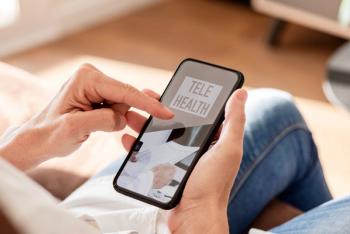
Five things COVID is teaching us about the patient experience
In the school of hard knocks, the coronavirus is the new headmaster.
In the school of hard knocks, the coronavirus is the new headmaster.
COVID-19 administered a nearly impossible financial test to physician practices, forcing them to quickly rethink the way they deliver care. From stay-at-home orders to the canceling of elective procedures, the numbers from a recent
Virtual survival
With in-person visits down, social distancing measures in effect, and no current COVID-19 vaccine, providers are leveraging new digital tools to survive. Telehealth has allowed providers to continue to see and connect with patients through virtual consults. Almost overnight, telehealth shot up to over half of provider visits, and researchers expect uptake will increase to nearly
Trending:
Digital patient engagement tools, including telehealth, are also facilitating the growth in virtual medical appointments for non-coronavirus issues. Forrester
Lessons learned
COVID, together with uptake in telehealth, is changing patients’ expectations and experience of care. With both physicians and their patients adjusting to the new normal, many practices are questioning whether it’s possible-or even desirable-to put the genie back in the bottle.
With the arduous adjustments behind us, we can begin to make sense of its lessons. Here are five things COVID-19 is teaching us about the patient experience that will extend long past this pandemic:
- Keep it simple. Digital solutions such as telehealth are essential, but they also must be easy to implement and use to get patients to engage. Nine out of 10 patients have access to a patient portal, for example, but less than
one-third use them. Cumbersome log-ins and app fatigue (too many choices, too much research, too many downloads) don’t match consumers’ expectations for instantaneous, seamless communication.
- Make it familiar. Virtual workflows should match the familiar steps of an in-office visit, but without the hassle of long waits and duplicated forms. Telehealth workflows that map to traditional clinical workflows-from waiting room to payment to intake to doctor’s visit-deliver a more natural, comfortable experience that patients prefer and expect, while allowing physicians and clinical staff to work efficiently and effectively.
Read More:
- Be convenient. Integrating digital check-in technology with the telehealth platform makes intake and registration faster and easier for patients. These tools allow patients to begin the check-in process-including review of systems, consent forms and health risk assessments-without the back-and-forth of phone calls and faxes. Cloud-based software also allows for life’s little interruptions without the risk of losing work. Patients can simply pick up where they left off.
- Keep it short. As restrictions lift, practices likely will offer both traditional and virtual appointments. Digital check-in tools, with their ability to capture upstream data, can eliminate the frustration of waiting rooms with their long wait times, tight appointment windows and “Petri dish” environments. Eliminating wait times improves patient satisfaction and trust, with the added benefit of increasing practice productivity.
- Put patients first. Digital tools such as telehealth, digital check-in, text messaging, wearables, and online scheduling help keep patients engaged and connected by bringing together services in a way that’s seamless, fast, convenient, and accessible. Patients who are more informed about and involved with their care experience better outcomes.
Patients have had a taste of healthcare on their terms and aren’t going back. Physicians who focus on the patient experience with digital tools that make care more convenient will not only weather the storm but gain competitive advantage in the future.
Scott Freedman is chief revenue officer for
Newsletter
Optimize your practice with the Physicians Practice newsletter, offering management pearls, leadership tips, and business strategies tailored for practice administrators and physicians of any specialty.











